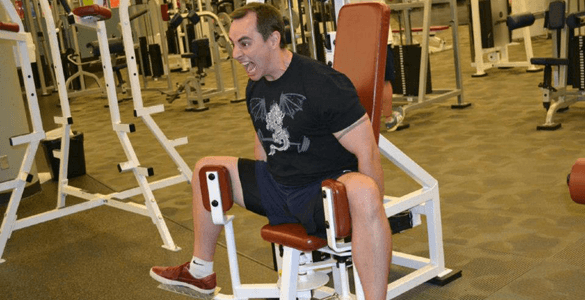It's happened to us all.
A client calls you 30 minutes before a session, says that their hurts, and they are really sorry, but they need to cancel their appointment.
You can:
A: Charge them for the session and generate some tension.
B: Not make money for the hour while you look at photos of that girl/boy you likes beach vacation on Facebook.
Neither option is good.
Fortunately there's a third option...
...You Can Train Your Client in Pain AND Fix The Underlying Issue
This article is going to teach you how to ensure that you don't lose out on income from missed sessions.
No matter how good of a trainer you are, nagging injuries come up, people complain, and if you can't train them in pain AND reduce the instances of pain, you're going to be one hella frustrated personal trainer (if you aren't already).
And no, you don't have to use pink dumbbells and bands all day. Here's an example:
14 out of 17 members of a female high school soccer team I trained outside a few summers ago entered a session complaining of shin splints after a particularly intense workout. So, being me, I said to the shin splints group, "Okay, then while everyone else runs their perimeters, I want you to do 50 air squats, 20 pushups, 20 back rolls to standing, and 20 stepback lunges on each leg before they return."
Everyone in the shin splints group had to murder their legs to complete the series. Following that set, I asked if they still had shin splints and MIRACULOUSLY only 3 of the 14 still said they had something resembling shin splints!
I'm not saying this to prove how much of a jerk I am to train with (I am), but to impress upon you that you can provide your clients a kick-ass workout even when they're feeling some form of pain or dysfunction.
The first step to working through pain is understanding what leads to the pain in the first place.
In the above example, the shin splints were caused by impact forces that were going through the legs during running (whether it was tibialis anterior fatigue, microtears to the interosseous membrane, microfractures to the tibia, or simply dead tired legs, we'll never know).
Because the mechanism of running and impact created the problem, the solution was to make them hate life while not "¨involving any impact through the legs; the air squats and stepback lunges instead of step-forward lunges are an example.
What About Common Rotator Cuff Issues?
A common issue for what's perhaps the demographic that spends the most money on training is rotator cuff issues. Picture Mr. Burns, you know, all hunched over with fingers tented and stuff.
You could choose to only address the rotator cuff and have him perform endless sets of external rotation with a band. He'd probably get bored and want to gouge his eyes out faster than I'm sure Kris Humphries did around day 40 in his marriage to Kim Kardashian.
Or you could work on fixing the underlying issue instead of focusing only on the rotator cuff.
Why not look at getting his T-spine into more extension? You could potentially work on getting his scapula to retract and depress to correct the potential imbalance between his upper traps and lower traps and work on breathing mechanics to prevent him from collapsing back into"¨flexion?
Sounds like a plan.
If he's hunched like crazy, he could use some re-training on getting his lats to fire CORRECTLY, meaning he feels it all the way down to his pelvis.
Meanwhile, on the other side of town, his legs seem to be fine, so why not blast them with some front squats, goblet squats, split squats, 1-leg squats, deadlifts, carries; as long as he isn't put into external rotation and abduction and maintains an upright posture he's bulletproof.
There. I literally just solved 90% of the rotator cuff problems you will ever see in the gym, and even gave you the program for it. Aren't you glad you checked this out today??











